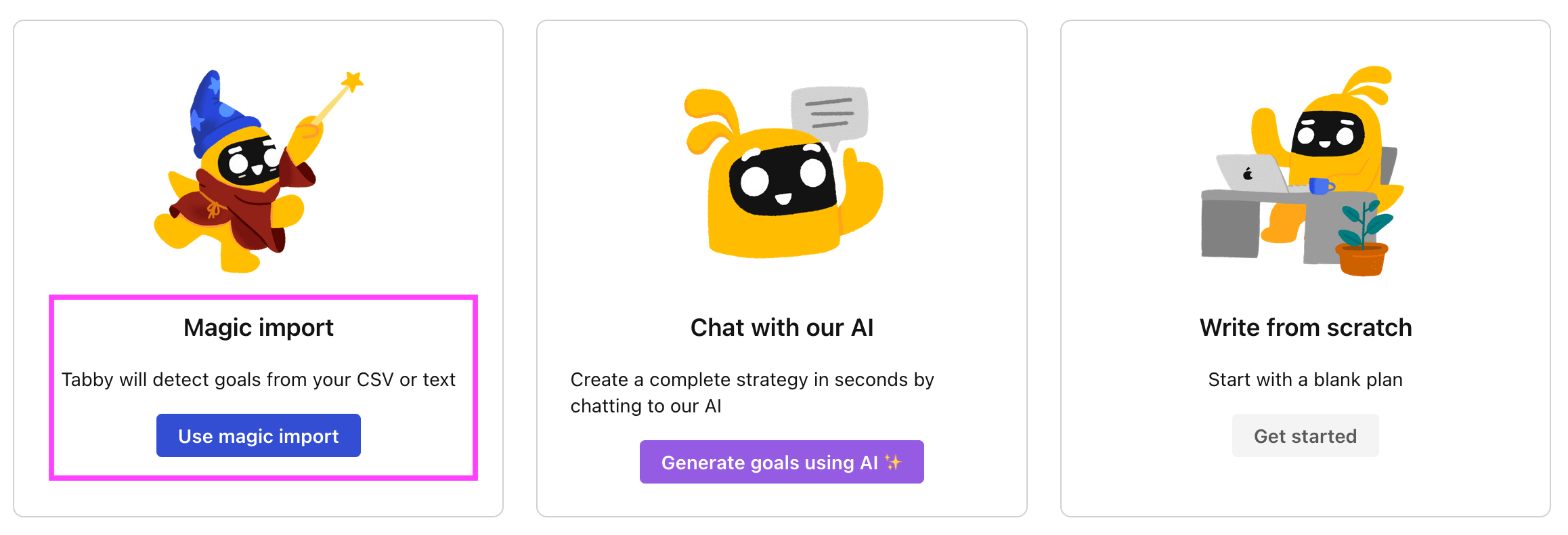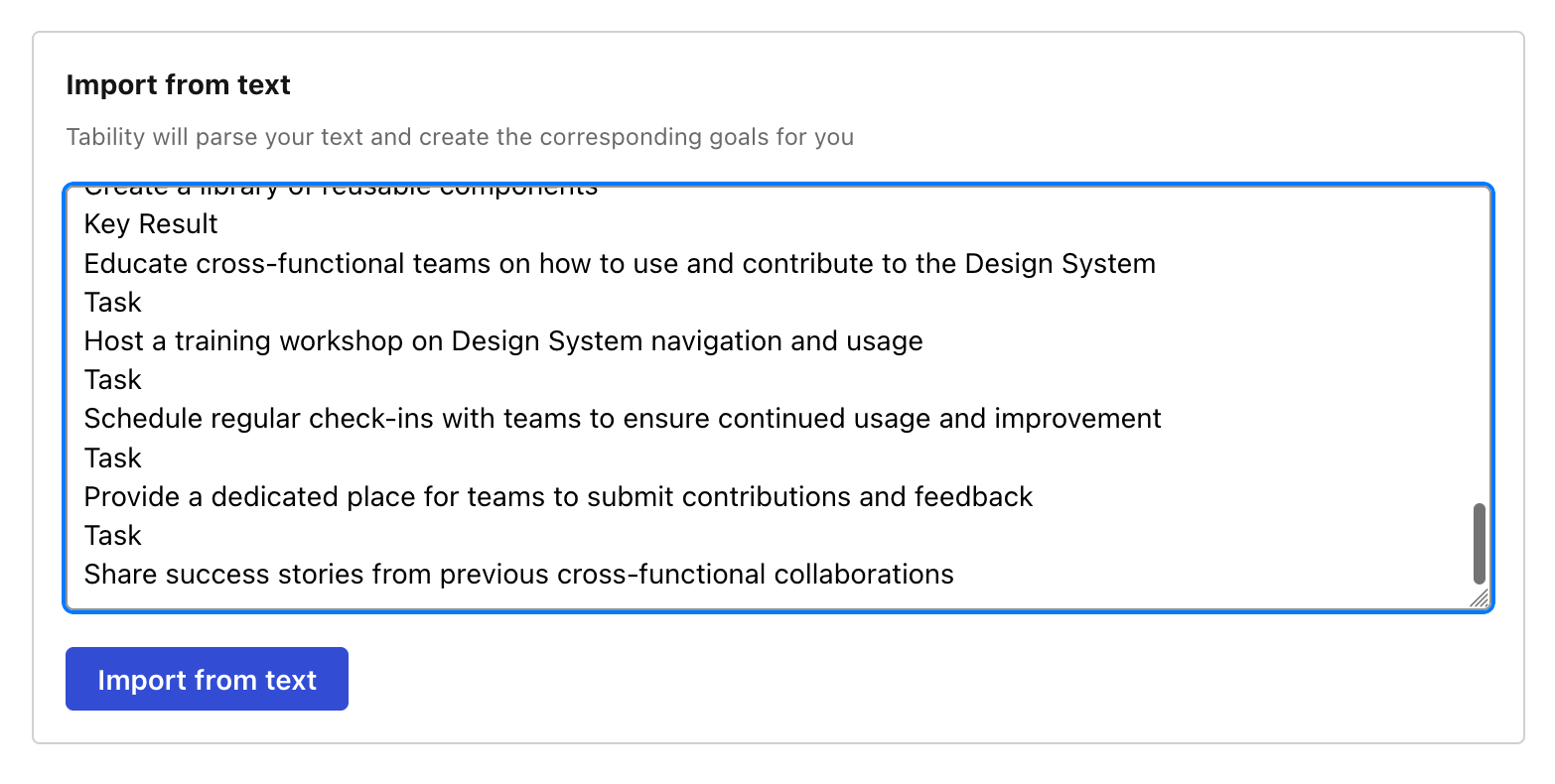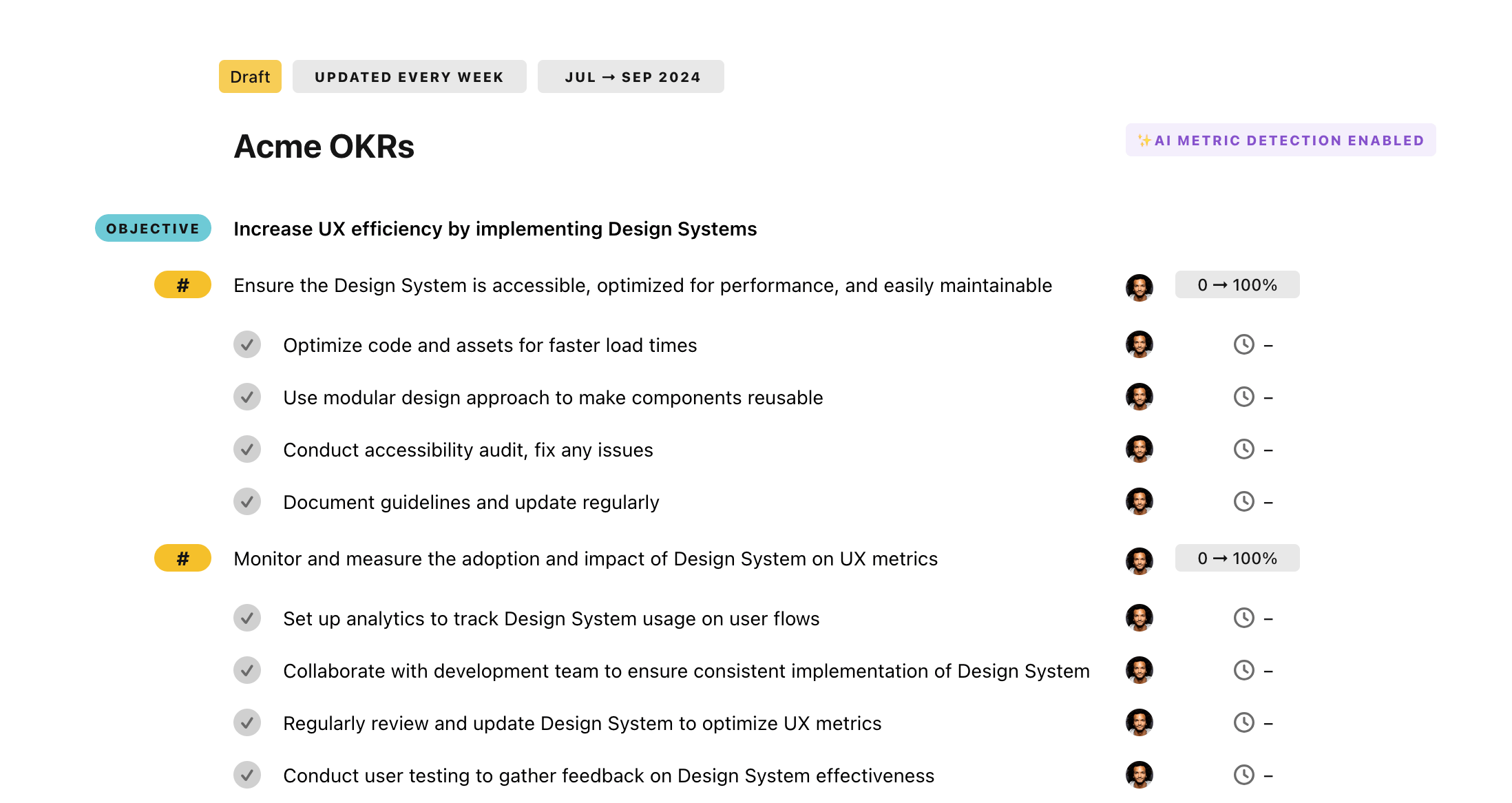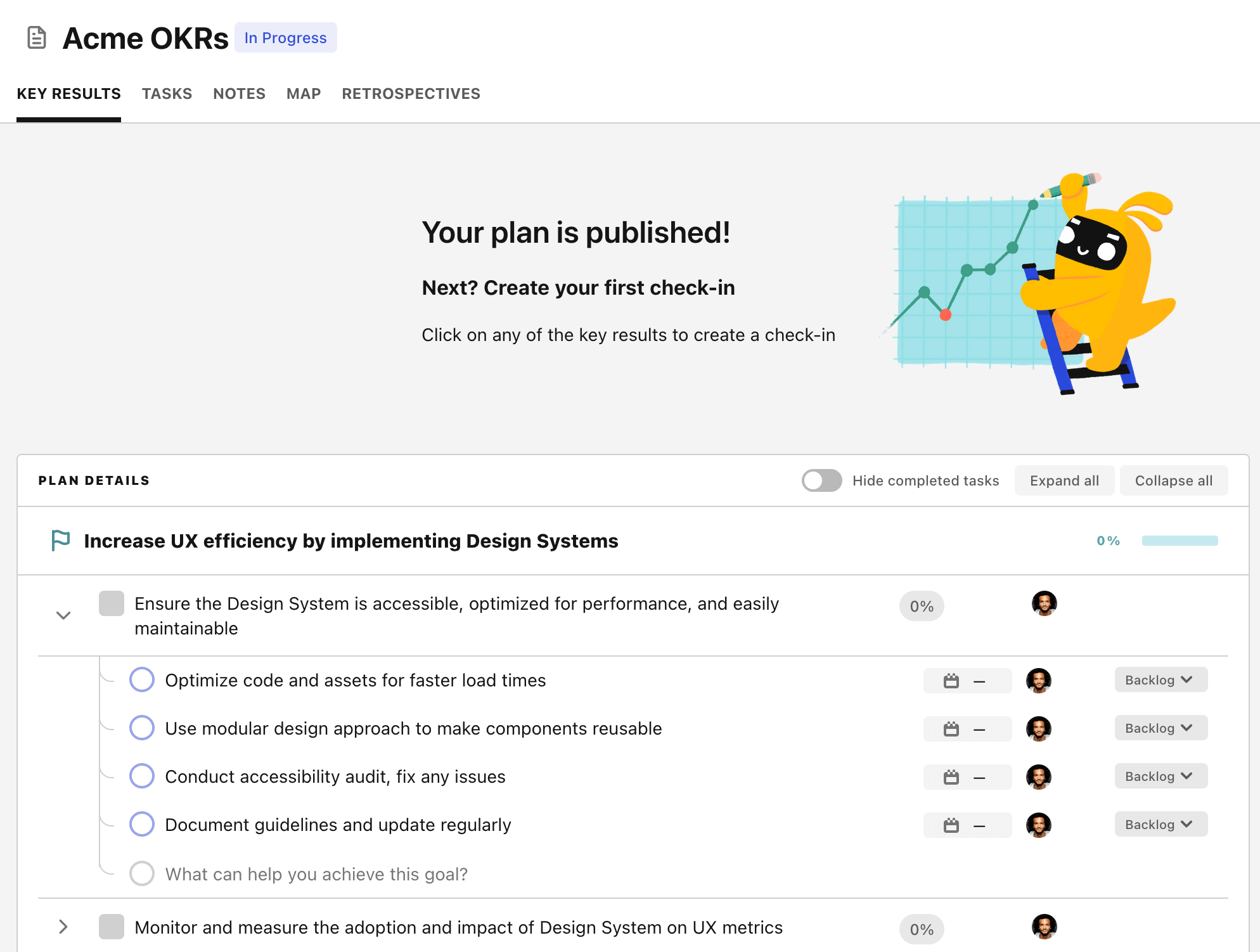OKR template to cultivate Balanced Scorecard consciousness in the organization for optimal strategy execution
Your OKR template
Next, the OKR aspires for a twenty-five percent upsurge in Balanced Scorecard utilization for strategy execution. Therefore, this necessitates organized training on the benefits of Balanced Scorecard usage, and offering incentives to motivate increased application of the Balanced Scorecard. Monitorization of its use and impact is crucial.
Another aspect of this OKR is aimed at creating and disseminating a Balanced Scorecard user guide to all employees in the organization. The initiatives for this feature developing a distribution strategy internally. A comprehensive Scorecard user guide is to be created. Ultimately, the guide is distributed to all employees.
The last phase of the OKR involves accomplishing distributed Balanced Scorecard user guidelines to everyone in the organization. The responsible team will design an internal distribution strategy, create a comprehensive Balanced Scorecard user guide, and ensure it reaches all employees in the organization.
ObjectiveCultivate Balanced Scorecard consciousness in the organization for optimal strategy execution
KRTrain 90% of the managers on Balanced Scorecard principles by the next review
Ensure 90% attendance and completion before review
Monitor managers' progress and understanding regularly
Identify and enroll managers in Balanced Scorecard training sessions
KRMeasure and achieve a 25% increase in usage of Balanced Scorecard for strategy execution
Conduct training sessions on Balanced Scorecard benefits
Implement incentives for increased Balanced Scorecard usage
Monitor use and impact of Balanced Scorecard
KRDevelop and distribute Balanced Scorecard user guide to all employees within the organization
Develop an internal distribution strategy
Create a comprehensive Balanced Scorecard user guide
Distribute the guide to all organization employees
How to edit and track OKRs with Tability
You'll probably want to edit the examples in this post, and Tability is the perfect tool for it.
Tability is an AI-powered platform that helps teams set better goals, monitor execution, and get help to achieve their objectives faster.
With Tability you can:
- Use AI to draft a complete set of OKRs in seconds
- Connect your OKRs and team goals to your project
- Automate reporting with integrations and built-in dashboard
Instead of having to copy the content of the OKR examples in a doc or spreadsheet, you can use Tability’s magic importer to start using any of the examples in this page.
The import process can be done in seconds, allowing you to edit OKRs directly in a platform that knows how to manage and track goals.
Step 1. Sign up for a free Tability account
Go tohttps://tability.app/signup and create your account (it's free!)
Step 2. Create a plan
Follow the steps after your onboarding to create your first plan, you should get to a page that looks like the picture below.

Step 3. Use the magic importer
Click on Use magic import to open up the Magic Import modal.
Now, go back to the OKR examples, and click on Copy on the example that you’d like to use.

Paste the content in the text import section. Don’t worry about the formatting, Tability’s AI will be able to parse it!

Now, just click on Import from text and let the magic happen.

Once your example is in the plan editor, you will be able to:
- Edit the objectives, key results, and tasks
- Click on the target 0 → 100% to set better target
- Use the tips and the AI to refine your goals
Step 4. Publish your plan
Once you’re done editing, you can publish your plan to switch to the goal-tracking mode.

From there you will have access to all the features that will help you and your team save hours with OKR reporting.
- 10+ built-in dashboards to visualise progress on your goals
- Weekly reminders, data connectors, and smart notifications
- 9 views to map OKRs to strategic projects
- Strategy map to align teams at scale